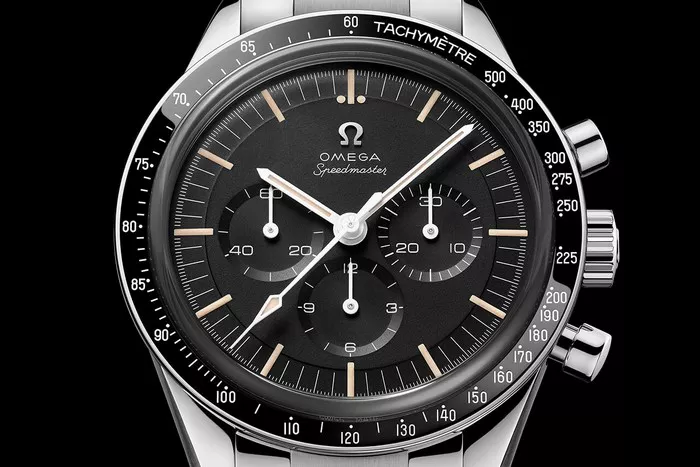In the world of horology, the designation “Swiss Made” stands as a hallmark of precision, craftsmanship, and unparalleled quality. Omega, a venerable name in the realm of luxury timepieces, often graces wrists with its iconic designs and technical prowess. The question that often resonates among enthusiasts and prospective buyers alike is a fundamental one—are Omega watches truly Swiss Made? In this in-depth exploration, we unravel the intricate threads that weave the Swiss-made legacy into the fabric of Omega watches, delving into the brand’s history, production processes, and the contemporary relevance of this esteemed designation.
A Historical Odyssey: Omega’s Swiss Roots
1. Foundation in Switzerland: The Birthplace of Excellence
The story of Omega begins in La Chaux-de-Fonds, Switzerland, in 1848, when Louis Brandt founded a small workshop dedicated to crafting pocket watches with precision and finesse. This foundation in the heart of the Swiss watchmaking industry laid the groundwork for Omega’s enduring commitment to Swiss horological excellence.
2. Pioneering Innovations: Swiss Ingenuity at its Core
Omega’s journey in watchmaking has been marked by pioneering innovations that have redefined the standards of the industry. From the introduction of the revolutionary Omega caliber in 1894 to the creation of the co-axial escapement in 1999, these advancements reflect the brand’s dedication to pushing the boundaries of Swiss watchmaking ingenuity.
Defining “Swiss Made”: Stringent Criteria and Quality Standards
1. The Swiss-Made Label: A Badge of Distinction
The designation “Swiss Made” is not a mere label; it is a testament to the rigorous standards set by the Swiss Confederation to ensure the authenticity and quality of watches produced in Switzerland. For an Omega watch to bear the coveted “Swiss Made” label, it must adhere to specific criteria outlined by Swiss law.
2. Swiss-Made Criteria: Crafting Authenticity
According to Swiss law, a watch can be labeled as “Swiss Made” if it meets the following criteria:
The movement must be Swiss.
The movement must be cased up in Switzerland.
The manufacturer must carry out the final inspection in Switzerland.
For Omega watches, this means that the intricate movements that power these timepieces are not only designed in Switzerland but are also manufactured and assembled within the country’s borders.
Omega’s Swiss Production: From Design to Assembly
1. Design and Development in Switzerland
Omega’s commitment to Swiss excellence extends to the design and development phase. The brand’s in-house team of designers and engineers, based in Switzerland, conceptualizes each timepiece, ensuring that it encapsulates the essence of precision and innovation synonymous with Swiss watchmaking.
2. In-House Movement Production: Mastering the Art of Horology
A significant aspect that contributes to Omega’s Swiss-made legacy is the brand’s emphasis on in-house movement production. Omega manufactures its movements in Switzerland, allowing for meticulous control over every stage of the manufacturing process. The production of movements in-house is a testament to Omega’s dedication to preserving the authenticity of Swiss watchmaking traditions.
3. Assembly and Quality Control: Swiss Craftsmanship at Every Step
The assembly of Omega watches takes place in Switzerland, where skilled watchmakers meticulously bring together the components with a level of precision that has become synonymous with Swiss craftsmanship. The final inspection, another crucial step in the Swiss-made criteria, ensures that each Omega watch meets the brand’s exacting standards before it reaches the wrists of its discerning wearers.
The Co-Axial Escapement: A Technological Marvel Born in Switzerland
Technological Advancements and Swiss Innovation
Omega’s introduction of the co-axial escapement, a groundbreaking advancement in watchmaking technology, is emblematic of the brand’s commitment to continuous innovation. This revolutionary escapement, designed by English watchmaker George Daniels and later perfected by Omega, reduces friction in the movement, enhancing accuracy and longevity. The co-axial escapement is a testament to the marriage of Swiss craftsmanship and cutting-edge innovation.
The Omega Speedmaster: A Swiss-Made Icon Beyond Earth’s Boundaries
Lunar Legacy: Swiss Precision on the Moon
The Omega Speedmaster, an icon in the world of watchmaking, achieved legendary status when it became the first watch worn on the moon during the Apollo 11 mission in 1969. The enduring legacy of the Speedmaster, coupled with its association with space exploration, solidifies its place as a quintessential Swiss-made timepiece.
The Global Presence: Swiss Excellence on a Worldwide Stage
International Recognition and Presence
While Omega’s roots are deeply embedded in Switzerland, the brand has gained international acclaim, becoming a global symbol of horological excellence. The widespread recognition of Omega as a Swiss-made brand reinforces the global appreciation for the precision, quality, and craftsmanship that define Swiss watchmaking.
Conclusion: A Timeless Symphony of Swiss Craftsmanship
In the tapestry of horology, Omega watches emerge not just as timekeeping instruments but as embodiments of Swiss precision and excellence. The brand’s unwavering commitment to meeting the stringent criteria set by the Swiss Confederation ensures that each Omega timepiece is not merely Swiss in name but Swiss in every essence—from design conception to final inspection.
As collectors and enthusiasts adorn their wrists with Omega watches, they carry a piece of Swiss craftsmanship that transcends time. The Swiss-made designation becomes not just a label but a testament to the enduring legacy of Omega—a legacy that continues to tick with the precision of Swiss horology, capturing the essence of time in every beat. In a world where seconds matter, Omega watches stand as guardians of Swiss excellence, reminding wearers that every passing moment is an ode to the timeless symphony of Swiss craftsmanship.

